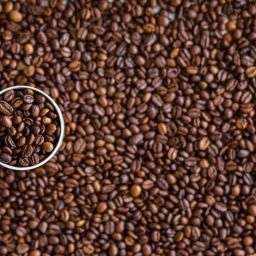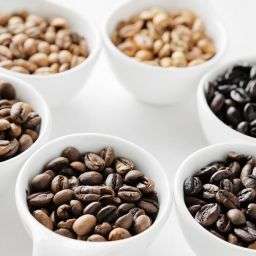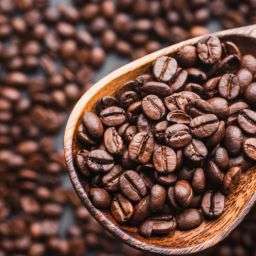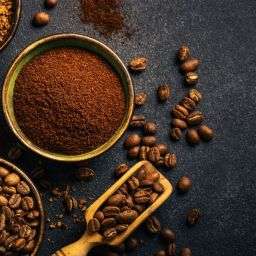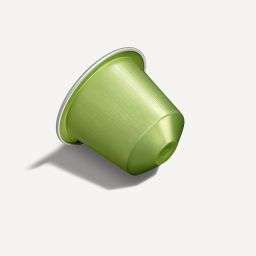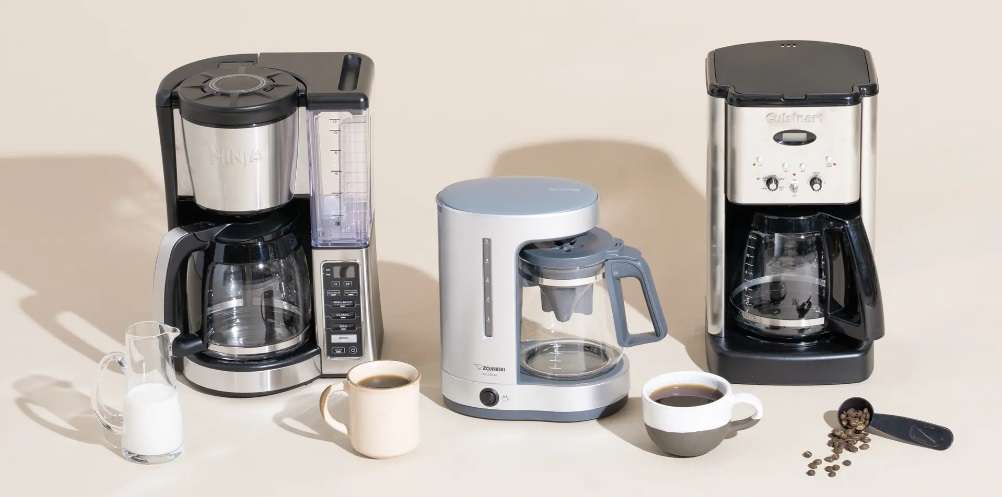
Learning how to use a coffee filter machine effectively can significantly enhance your daily coffee experience, making it an essential skill for coffee lovers. These machines offer a convenient and straightforward way to brew rich and flavorful coffee, ensuring a perfect cup every time.
With the right technique and a bit of knowledge, you can unlock the full potential of your coffee filter machine, turning your kitchen into your favorite café. In this guide, we’ll explore everything you need to know to master your coffee brewing process, from selecting the best machine for your needs to understanding the intricacies of coffee and water ratios.
Key Takeaways
- Choosing the Right Machine: Not all coffee filter machines are created equal. We’ll help you understand the differences between various models and what to look for when choosing the one that’s right for you.
- Understanding Coffee and Water Ratios: The secret to a perfect brew lies in the balance between coffee and water. We’ll discuss how to find the right ratios to suit your taste preferences.
- The Importance of the Brewing Process: Each step in the brewing process plays a vital role in shaping the flavor of your coffee. We’ll break down these steps to help you brew like a pro.
- Tips for the Best Results: From choosing the right filters to the perfect grind size, we’ll share expert tips to help you achieve the best possible results with your coffee filter machine.
Understanding Your Coffee Filter Machine
When it comes to brewing the perfect cup of coffee, the machine you choose plays a pivotal role. Let’s dive into the world of coffee filter machines, exploring popular models, the types and sizes of filters they use, and how they stack up against other brewing methods.
Popular Models and Their Features
Morphy Richards Pour Over Filter Coffee Maker: This model is designed for those who appreciate the ritual of coffee brewing. It mimics the manual pour-over process, providing a richer flavor and aroma than traditional drip machines.
Smeg DCF02: If you’re looking for style and substance, the Smeg DCF02 doesn’t disappoint. Known for its retro design, this machine offers not only visual appeal but also several programmable features, allowing you to wake up to the smell of freshly brewed coffee.
Russell Hobbs Luna 23241, De’Longhi Active Line, and Melitta AromaElegance Deluxe are other notable mentions, each with unique features that cater to different coffee brewing needs and preferences. Some prioritize speed and convenience, while others focus on enhancing the flavor profile and strength of the coffee.
Types and Sizes of Filters
The type of filter you use can significantly impact the taste of your coffee. Here’s a quick rundown:
- Paper Filters: These are the most common and disposable. They come in various sizes and shapes, with brands like Melitta and Chemex offering both bleached and unbleached options. Paper filters are known for producing a clean cup of coffee by filtering out most of the coffee oils and sediments.
- Metal Filters: Reusable and eco-friendly, metal filters allow more oils to pass through, resulting in a richer and fuller-bodied cup of coffee. However, they may let through more sediment than paper filters.
- Cloth Filters: These offer a middle ground between paper and metal filters, allowing some oils to pass through for flavor but less sediment than metal filters. They require regular cleaning to maintain their effectiveness.
Comparing Brewing Methods
When comparing filter machines to other brewing methods like the French press, moka pot, and pour-over options, it’s essential to consider both the advantages and disadvantages.
- Convenience and Ease of Use: Filter machines excel in convenience, making them ideal for those who prefer a straightforward brewing process without compromising on taste.
- Flavor and Control: Manual methods like pour-over and French press offer more control over the brewing process, allowing for adjustments in brewing time and temperature. This can lead to a more complex flavor profile but requires more effort and precision.
- Capacity and Speed: Filter machines typically cater to multiple cups, making them suitable for families or offices. They brew coffee faster than manual methods, which can be a significant advantage during busy mornings.
Proper Coffee and Water Ratios
The magic begins with the right coffee and water ratios. Too much coffee and your brew might end up overly bitter; too little, and it could taste weak and underwhelming. A general guideline to follow is the “Golden Ratio” – about 1 to 2 tablespoons of coffee for every 6 ounces of water. However, this is not a one-size-fits-all rule.
Depending on your taste preferences, you may want to adjust these ratios slightly. If you prefer a stronger cup, add a bit more coffee. For a lighter brew, reduce the coffee amount. The key is to experiment until you find your perfect balance, making note of the ratios that suit your taste buds best.
Prepping the Coffee Filter
Equally important is the preparation of your coffee filter. Whether you’re using paper, metal, or cloth filters, proper preparation can significantly impact the taste and quality of your coffee.
- Paper Filters: Before adding coffee, place the paper filter in the basket and rinse it with hot water. This step is crucial as it removes any paper taste that might transfer to your coffee and also helps to preheat the brew basket. Ensure the filter fits snugly against the sides of the basket to prevent coffee grounds from slipping through.
- Metal and Cloth Filters: For reusable filters, make sure they are clean and free from any old coffee residues. Rinsing metal or cloth filters with hot water not only cleans them but also warms up your brewing equipment, which is vital for maintaining the right brewing temperature.
Step-by-Step Brewing Guide
Brewing a delightful cup of coffee with a filter machine is a process that combines tradition with a touch of personal preference. Let’s walk through the steps to achieve that perfect brew:
- Filling the Water Tank: Start by filling the machine’s water tank with fresh, cold water. If your water is hard or tastes off, consider using filtered or bottled water to improve the final taste of your coffee.
- Adding Coffee Grounds: Place your filter in the basket, ensuring it’s properly fitted. Now, add the coffee grounds. The general rule is about 1 to 2 tablespoons of coffee per 6 ounces of water, but adjust according to your taste preferences.
- Selecting Brewing Temperature: While most machines automatically set the brewing temperature, aiming for about 195°F to 205°F is crucial for optimal extraction. If your machine allows for temperature adjustment, use this range as a guideline.
- Starting the Machine: With everything in place, it’s time to start the brewing process. Press the brew button and wait for the magic to happen. Brewing times will vary depending on the machine and the amount of coffee being made.
Special Focus on Coffee Grounds
The choice between pre-ground and freshly ground coffee beans significantly impacts your coffee’s flavor. Freshly ground beans offer a more robust and nuanced flavor profile because they retain more of their natural oils and aromatics. Pre-ground coffee, while convenient, can’t compete with the freshness and depth of flavor that comes from grinding your beans just before brewing. Investing in a good grinder and whole beans can elevate your coffee experience dramatically.
Advanced Tips for Best Results
To ensure the best results from your coffee filter machine, keep these tips in mind:
- Check the Coffee Pot Placement: Before starting the machine, make sure the coffee pot is correctly placed. It sounds simple, but it’s a common oversight that can lead to spills and wasted coffee.
- Keep It Clean: Regularly cleaning your coffee machine and filter basket is crucial for maintaining the quality of your brew. Over time, oils and residues can build up, imparting unwanted flavors to your coffee. A clean machine is the secret to consistent, delicious coffee.
- Water Quality Matters: The water you use is just as important as the quality of your coffee beans. Hard or chlorine-tasting water can ruin a good brew. Using filtered or bottled water can make a significant difference in taste.
FAQs
What’s the difference between filter, drip, and pour-over coffee?
- Filter Coffee is a broad term that often refers to coffee brewed through a filter by any method. It can encompass both drip and pour-over methods.
- Drip Coffee is specifically made with machines that heat water before dripping it over coffee grounds. The water filters through the coffee and falls into a pot. It’s known for convenience and consistency.
- Pour-Over Coffee involves manually pouring hot water over coffee grounds in a filter. The water then flows through the coffee and filter into a carafe or mug. This method gives you more control over the brewing time and temperature, potentially leading to a more nuanced flavor profile.
Each method has its unique characteristics, with drip coffee being more convenient and pour-over offering more control over the brewing process for those who like to fine-tune their coffee’s taste.
Final Thoughts
Whether you’re using pre-ground beans for convenience or grinding fresh beans for a richer flavor, the key is to experiment and find what works best for you. Cleaning your machine regularly and using quality water can also significantly enhance your coffee experience. By following these guidelines, you’ll enjoy the ease of use and delicious results that come from brewing coffee with a filter machine. Embrace the process, and let each cup bring a moment of pleasure into your day.


